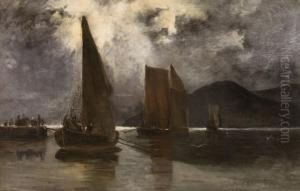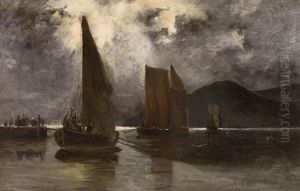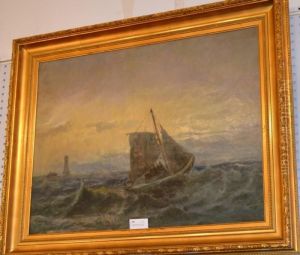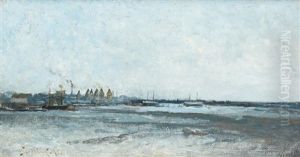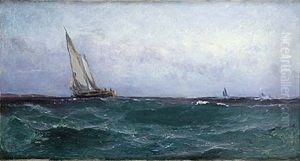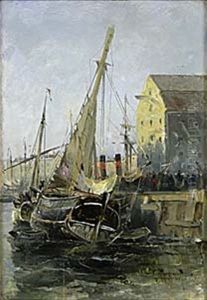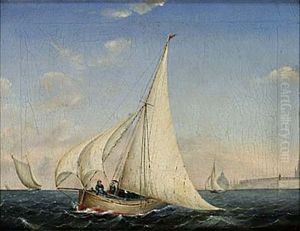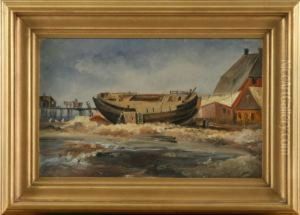Adolf Nordling Paintings
Adolf Nordling was a significant figure in the 19th-century art world, primarily known for his contributions as a Swedish architect. Born on October 18, 1828, in Sweden, Nordling embarked on a journey in the realm of architecture and design that would see him leave a lasting impact on the landscape of Swedish architecture. Although not as widely recognized internationally as some of his contemporaries, Nordling's work remains an essential part of the architectural heritage in Sweden, reflecting the aesthetic and functional demands of his time.
Nordling's education and early career were marked by a dedication to mastering the principles of architectural design, which was a blend of practicality and artistic expression. Throughout his career, he was deeply influenced by the prevailing architectural styles of the 19th century, including Neoclassicism and the later emergence of Romantic Nationalism. His ability to adapt and innovate within these styles, while also considering the functional needs of his projects, set his work apart.
Significant projects undertaken by Nordling include various public buildings, churches, and residential structures, which showcased his versatility and creativity as an architect. His designs often reflected a keen understanding of space, light, and material, which he skillfully combined to create aesthetically pleasing and functional buildings. Despite the limited technological resources available during his time, Nordling's work exhibited a high level of craftsmanship and attention to detail.
Adolf Nordling's contributions to architecture were not only limited to his building designs but also included his role as a mentor and influencer among younger architects. He was involved in various architectural societies and played a part in the education of upcoming architects, helping to shape the future of the profession in Sweden. Nordling's legacy is preserved in the buildings he designed, which continue to be admired for their architectural beauty and historical significance.
Adolf Nordling passed away on December 16, 1912, leaving behind a rich legacy in the field of architecture. His work continues to be studied and respected by architects and historians, serving as an inspiration for those interested in the evolution of architectural design and its impact on society. Through his buildings, Nordling contributed to the cultural and architectural heritage of Sweden, making him a noteworthy figure in the history of Swedish architecture.
